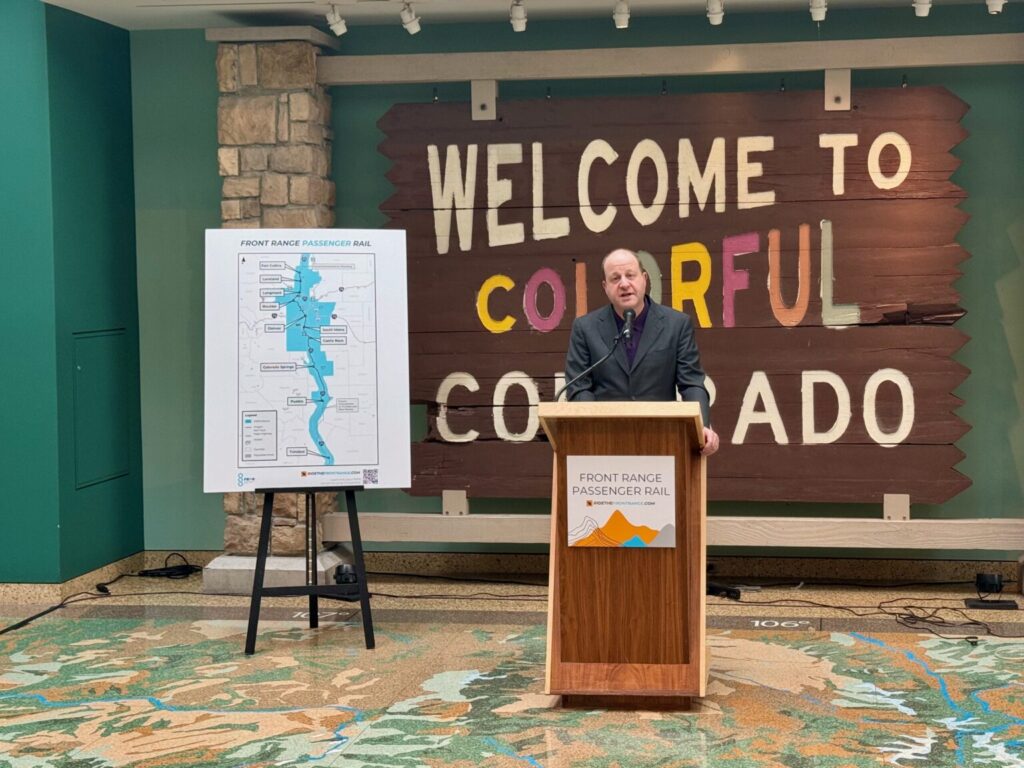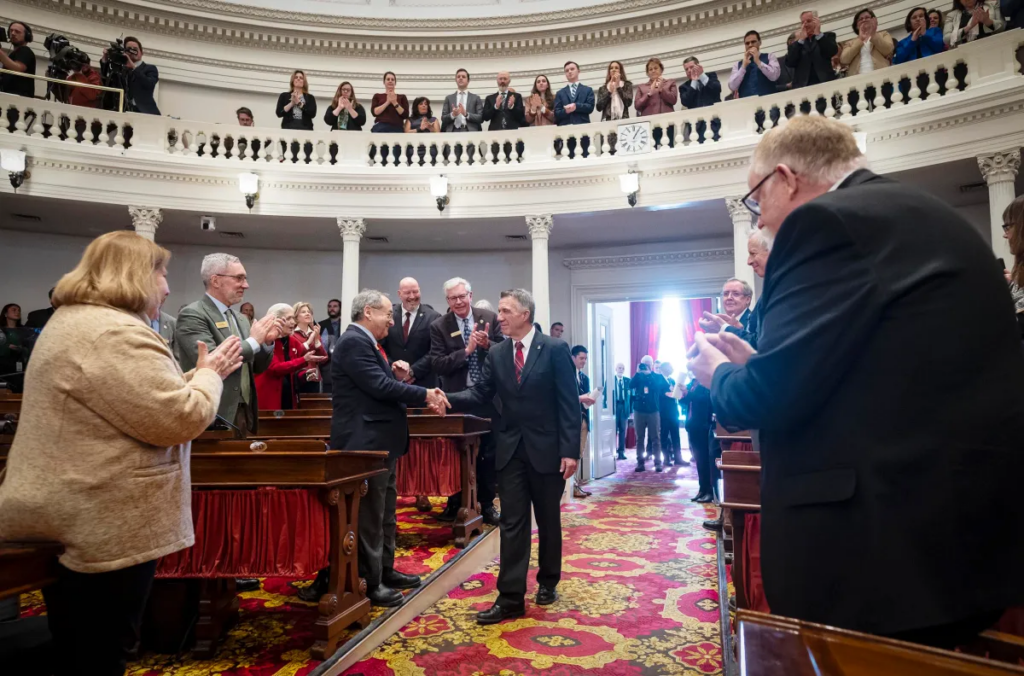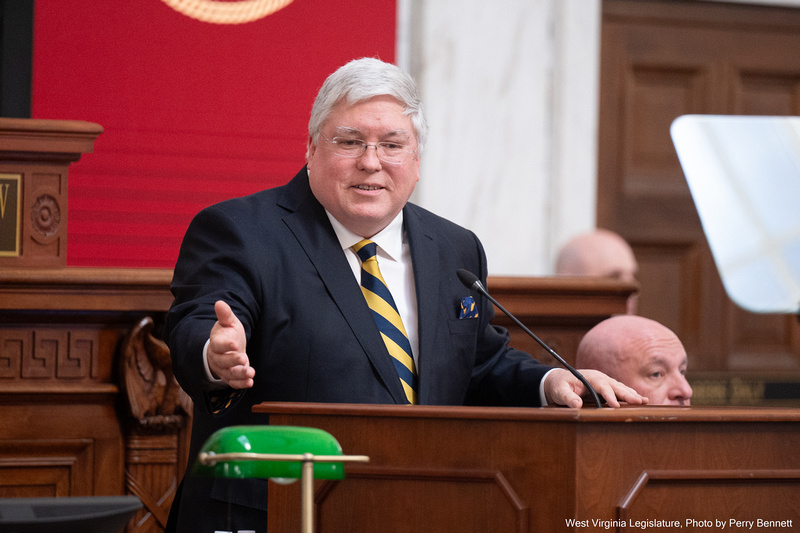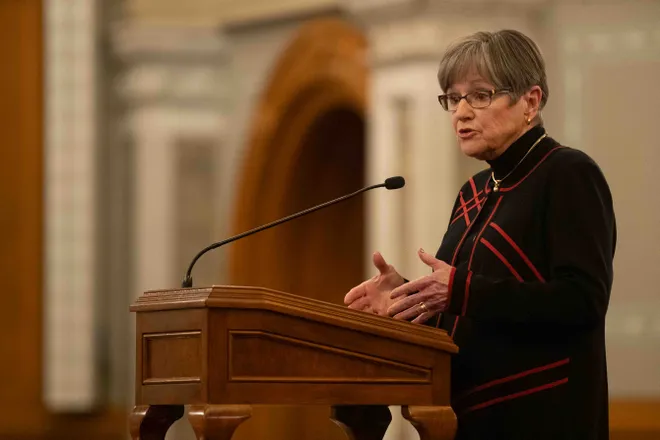Building for Tomorrow: Governors Showcase Infrastructure Investment in State of the State Addresses
March 28, 2025
Infrastructure investment continued to be a top priority for many Governors in their 2025 State of the State or Territory addresses. Governors showcased both infrastructure success stories in their jurisdictions and set out legislative and other priorities for the year ahead for different types of infrastructure. Common themes emerging from the remarks include the importance of infrastructure investment in supporting long-term economic growth, sustainability and quality of life for future generations.

In their State of the State remarks, a number of Governors highlighted transportation projects that have secured funding or have hit key milestones – helping make their states more resilient and prepared for the future.
In his address, NGA Chair Colorado Governor Jared Polis celebrated a $90 million downpayment to expand passenger rail on the Front Range in 2024. Governor Polis noted that transportation congestion is “a leading source of pollution, and by expanding public transit and rail options, we can save people time and money on daily commutes and improve air quality.” Governor Polis also announced that starting in January 2025, the Winter Park Express, which runs from Denver’s Union Station to Winter Park Resort, will not only operate more often but with lower fares as well.
Tennessee Governor Bill Lee highlighted how Tennessee expanded its ability to build roads after it passed the Transportation Modernization Act. This legislation allowed the Tennessee Department of Transportation (TDOT) to use an expanded set of alternative delivery methods, including Public-Private Partnerships (P3). This year, Governor Lee said he wanted to further this work, noting his administration “will propose an additional $1 billion to TDOT to build and maintain roads and bridges all across Tennessee.”
In Rhode Island, Governor Daniel McKee addressed the state’s progress surrounding bridge construction to improve transportation. During repair efforts on the Washington Bridge in Providence, Governor McKee made the decision that the bridge needed to be rebuilt after clear signs that it was irreparable. “We’ve made progress toward ensuring Rhode Islanders will have a new bridge that has a state-of-the-art design and improved traffic flow,” said Governor McKee. “[I]t will be a bridge that outlasts our lifetimes and keeps people safe.” To this end, Rhode Island has secured $220 million in federal grants to replace the bridge, and the demolition of the old bridge’s superstructure is nearly 75 percent complete. In addition, the Governor noted that “[l]ast year the Department of Transportation secured a $251-million federal grant to take on the largest bridge project in Rhode Island history. These 15 bridges run between Providence and Warwick on I-95 – a critical corridor that carries nearly 185,000 vehicles daily.”
Governor Albert Bryan Jr. from the U.S. Virgin Islands spoke about his territory’s remarkable progress with transportation modernization across the three main islands – generating jobs, boosting economic growth and enhancing connections. Governor Bryan proudly reported “the Altona Lagoon and Queen Mary Highway bridges on St. Croix are now complete and open to the public.” In addition, he announced the reopening of East Airport Road as well as ongoing construction on Midland Road and bridge repairs to Route 669.
Other Governors, such as those from Vermont, Montana and North Carolina, announced their plans to increase funding toward transportation needs across their respective states, with long-term benefits for their communities.

Vermont Governor Phil Scott acknowledged the rising costs of projects to maintain and expand infrastructure, including roads, bridges, public transit and rail. For decades, excess revenue from the state’s Transportation Fund went to fund other areas in the budget through a process known as the “JTOC transfer.” Governor Scott called to “take a step toward making [the Transportation Fund] whole by eliminating the JTOC transfer once and for all.” He advised that this will give the Transportation Fund an additional $20 million, which will allow the state to invest in its roads, bridges, and other transportation infrastructure with the entire fund.
In Montana, Governor Greg Gianforte underlined the need for the state to have strong infrastructure. He said that this goal would be supported by the allocation of “an additional $10 million a year toward bridge repairs, with the goal of fixing 500 bridges over the next five years.”
In his first State of the State Address, newly elected North Carolina Governor Josh Stein spoke about the ongoing relief efforts following Hurricane Helene’s devastation, including progress that has been made fixing infrastructure impacted by the storm. The Governor called for roads and bridges across western North Carolina to be fixed and noted that he is actively working with President Trump and the President’s Cabinet to secure more federal funds. The Governor celebrated the “crews and contractors of the Department of Transportation [who] have reopened more than 1,300 roads so far.”
Alongside transportation projects, several Governors showcased their achievements in broadband. Governors highlighted the importance of broadband in today’s digital world and demonstrated progress in connecting homes to high-speed internet in their states and territories.
Acknowledging the critical nature of high-speed internet access, Kentucky Governor Andy Beshear said in his State of the Commonwealth Address that “the internet is no longer a luxury;” rather, it’s “a necessity for education, health care and for our economy.” The Governor reported that newly approved projects will connect more than 80,000 homes to high-speed internet in the state. He discussed traveling to a small community in Harrison County last year where the 350 residents have never had high-speed internet access, and was proud to announce that “Team Kentucky awarded $22 million to help connect homes and businesses in the county.”
In her State of the State Address, Alabama Governor Kay Ivey brought attention to her administration’s successful broadband expansion, noting that Alabama is being recognized as a national model for broadband deployment. “Since taking office, we have supported over 200 expansion projects, which will allow more than 142,000 more addresses to be connected to high-speed internet,” Governor Ivey said.

Underscoring the importance of broadband and its impact on growing the economy, West Virginia Governor Patrick Morrisey emphasized and highlighted his commitment to improving internet access across the state. He outlined plans to collaborate with the Trump Administration to address broadband challenges by leveraging federal broadband funding. Acknowledging that West Virginians deserve better connectivity, Governor Morrisey stated in “today’s economy, maintaining reliable and fast connections to the Internet isn’t a luxury; it’s a necessity. West Virginians don’t want broadband that moves at the speed of slow.”
Governors also underscored recent efforts to update aging water supply infrastructure, ensuring that their states can safeguard water resources for future generations.
Wyoming Governor Mark Gordon highlighted in his State of the State Address the critical importance of water infrastructure and the challenges aging systems pose for the state. During his first year in office, the collapse of a tunnel in the Goshen Gering-Fort Laramie Canal highlighted such vulnerabilities, cutting off water to hundreds of thousands of acres of farmland. Governor Gordon, an irrigator himself, pointed to the 116-year-old LaPrele Dam as another pressing concern. The Governor called upon the legislature to “send me a proposal not only to expedite the building of a new dam, but also to defend existing use and storage rights, protect the safety of those living below the dam, and providing appropriate assistance to those irrigators while the new dam is being built.”
In Idaho, Governor Brad Little’s KEEPING PROMISES plan outlines the state’s commitment to securing water for generations to come. His plan will commit $30 million in funding to tackle the backlog of unfunded water projects in the state. He emphasized that “securing water for future generations and protecting Idaho agriculture requires both the new plan and continued investments that have proven to raise water levels in the Eastern Snake Plain Aquifer – the lifeblood of Idaho agriculture.”

Kansas Governor Laura Kelly underscored in her State of the State Address that there is work to be done to secure the state’s water supply in the state, which is critical to the state’s agriculture industry. Kansas needs to address the issue now, with the Governor expressing that “[s]ome parts of western Kansas don’t have the groundwater to last another 25 years.” The Governor has attributed this water management issue to decade-long bureaucracy causing an inability “to align efforts around policy, planning, and investment.”
To solve this, Governor Kelly proposed three core solutions: creating an Office of Natural Resources to streamline “systems to make our work so much more efficient and effective,” allocating an additional $30 million to safeguard the water supply to bring the state’s overall investment to $90 million each year, and developing “a comprehensive, long-term, and sustainable strategy to ensure that Kansans have the water supply they need [ … ] for generations to come.”
In Texas, Governor, Greg Abbott emphasized the importance of water and how it impacts almost every aspect of life throughout the state. Last session, Texas provided a $1 billion investment for water projects and infrastructure to help the many communities facing faulty infrastructure and agriculture producers struggling to secure enough water for their crops. In this session, the Governor called to “Texas-size that investment” to “put Texas on a path to have plenty of water for the next 50 years” through tapping into new water supplies and repairing pipes to save billions of gallons of water each year.
Please visit NGA’s Infrastructure Program website here to learn more about the work NGA is doing to support Governors’ offices as they implement state and federal infrastructure policies and programs and deliver infrastructure projects in their states and territories.
Search
RECENT PRESS RELEASES
Related Post




